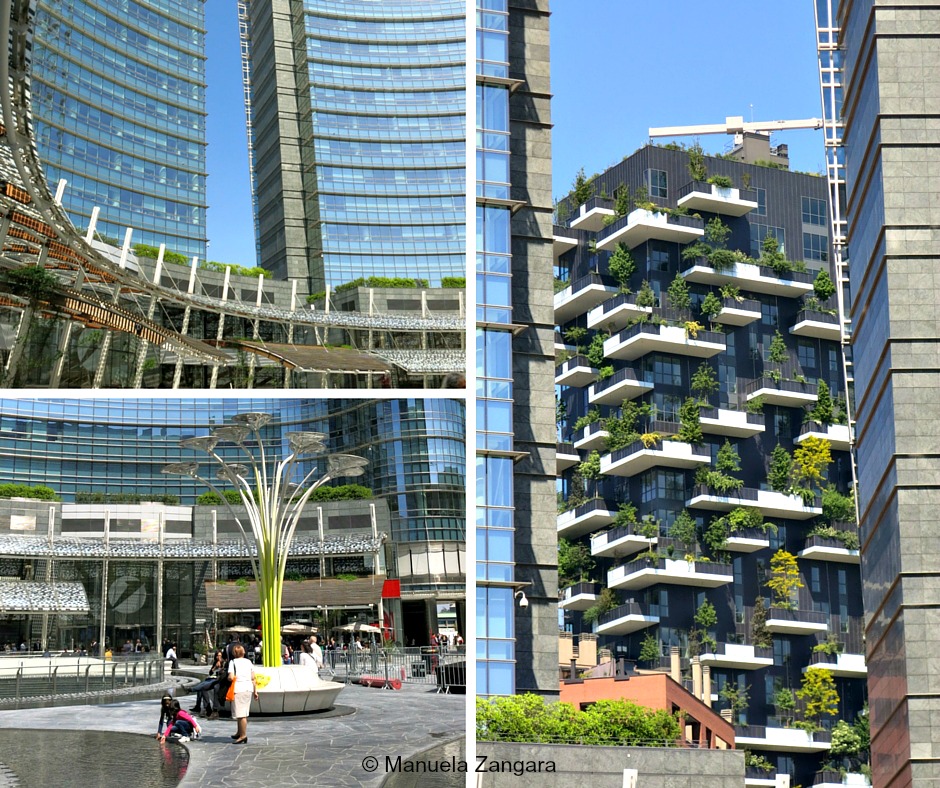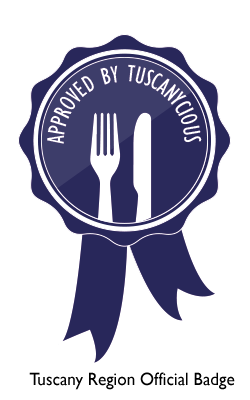
If you have been reading Manu’s Menu for a while, you will probably know that I was born and raised in Milan (or Milano as we say), in Northern Italy. I have always loved my home town, since I was a kid. Every time we used to go on holiday somewhere, I couldn’t wait to be back “home”. We would spend all summer in Sicily and even though the seaside was wonderful, I would still miss Milan. It’s hard to explain to someone who isn’t born there. Milan is not a beautiful city like Rome, Florence or Venice. Yet it is elegant and fascinating. And today I will show you why with this little Milan Guide.
SIGHTSEEING

I know many Italians think that people from Milan are always busy and a bit arrogant, but the truth is we are just proud to be “Milanesi”. Milan has got plenty of tourist attractions, like the Sforzesco Castle and Leonardo’s Last Supper, but the symbol of the city is its Cathedral. Everyone knows it as “Duomo” and it is a huge gothic church, right in the centre of the city. At the top of the Duomo, there is a golden statute of the Virgin Mary that we call “Madonnina” (little Virgin) and this is one of the most important landmarks of Milan. You can climb to the top of the Cathedral and I highly recommend it for the amazing view. Besides, walking around the intricate white spires and statues is an extraordinary experience.

The Duomo took almost 600 years to complete and for this reason we use the phrase “Fabbrica del Duomo” as an adjective to describe an extremely long and complex task, maybe even impossible to complete.
On the left-hand side of the Cathedral, there is the Royal Palace which has been the seat of government of Milan for many centuries. Today it is an important cultural centre, often used for exhibitions.
On the the right-hand side of the Duomo, there is the entrance to Galleria Vittorio Emanuele II.

This is one of the world’s oldest shopping malls. Housed within a four-story double arcade the Galleria is named after Vittorio Emanuele II, the first king of the Kingdom of Italy and it was built by 1877.

From here you reach a little square with the statue of Leonardo da Vinci in the middle.

This is Piazza della Scala, where the famous “La Scala” opera house is.

At the back of the Duomo you find a long pedestrian street called Corso Vittorio Emanuele. This is the place where all the trendy (and reasonably affordable) shops are.


You can find the same kind of shops in Corso Buenos Aires, another popular shopping area.
At the end of Corso Vittorio Emanuele, there is Piazza San Babila, from where the fashion district begins: Via Montenapoleone, Via della Spiga, Via Bagutta and the surrounding streets are filled with big name ateliers: Versace, Valentino, Gucci, Prada, Armani… you name it.


If it’s a well known fashion stylist, he/she will have a shop here. Milan is one of the fashion capitals of the world and when it hosts the yearly fashion week, everything stops!

If you keep walking from Piazza San Babila, straight on Corso Venezia, you will reach Palestro, with its garden and Museums and then Porta Venezia, from where all rallies begin. This is also the beginning of Corso Buenos Aires.

We were lucky enough to be in town for the yearly 25th of April’s rally. Every year on this date, people march to remember the end of World War II and to celebrate the liberation from the Nazi and the freedom from fascism. It is a very important day and we call it “Liberation Day”. This year marked the 70th anniversary, so it was even more special than usual.

We were also very lucky to see some partigiani – participants in the Italian resistance – marching during the rally. They would have been very young at that time and I was very happy that my children could see and thank them in person, as I doubt they will get another chance.

The area around Porta Garibaldi station has been completely renovated since I was last in town and I was pleasantly surprised by the new Gae Aulenti Square and its skyscrapers.



It is a stylish and beautiful space with sculptural features including a continuous flowing circle of seating surrounding a vast reflecting pool.

From there you can also see the Bosco Verticale (Vertical Forest) – a pair of residential towers that host more than 900 trees on their terraces!

For the past few months Milan has also been hosting the EXPO, which is all about… food. I couldn’t visit it, but I have been told it is worth it!

FOOD
Italians love and are quite famous for their aperitivo. It is our way to start off dinner. We usually drink some wine (cocktails have been introduced too, lately) and eat something with it, to “prepare” our tastebuds for dinner. In more recent years, aperitivo has become much more similar to a meal on its own, especially in Milan. Many youngsters get together at local cafes to have an aperitivo, which is served with tapa style dishes and they make a dinner out of it. If you are interested to find out more, my friend Paolo has written a wonderful article about aperitivo on Quatro Fromaggio and Other Disgraces on the Menu. A great area to experience this kind of meal is the Navigli district… get there for “happy hour”.
Another place you should not miss is Luini. It is a bakery just off of Corso Vittorio Emanuele, near Duomo. You MUST try their panzerotti (fried “calzoni”)… go for the classic tomato and mozzarella and then pick your favourite!
Another place not to be missed is Eataly. It is the largest Italian marketplace in the world, comprising a variety of restaurants, food and beverage counters, bakery, retail items, and a cooking school. I will write a separate post about my experience at one of the Milan outlets, so stay tuned!
Another great experience is a visit to an artisan cheese factory. I took my kids to see how mozzarella is made at a place not far from my house and from where I used to buy freshly made mozzarella as a child. The place is called Caseificio Battipaglia and they make lots of amazing cheese.

I took a short video for all of you, so you too can see how “real” mozzarella is made.
Did you see how stretchy that is?? That’s why I always complain about the cheese sold here as “mozzarella” or “bocconcini” and I affectionately call it “plastic cheese”… that NEVER stretches like real mozzarella… sigh!
RESOURCES ON MSM
RECIPES FROM THE REGION OF LOMBARDY:
Dried Porcini and Saffron Risotto
Pumpkin Risotto with Gorgonzola Sauce
Brutti ma Buoni
Casoncelli alla Bergamasca
Panino con la Salamella
Cassoeula
Home-made Verzini
Sbrisolona
Panettone
Tortelli di Zucca
Mostarda Mantovana
Riso al Salto
Pumpkin Risotto
Chestnut Gnocchi Valchiavenna Style
Taleggio and Apple Risotto
Potato Gnocchi with Taleggio and Orange Fondue
Polenta Concia
Tortelli di Carnevale
Cotolette alla Milanese
Ossobuco alla Milanese
Risotto alla Milanese
TRAVEL IN ITALY:

HOW TO GET THERE
By Plane
Milan has three airports: Malpensa, Linate and Orio al Serio.
Malpensa is the biggest airport in the Milan area and is located approximately 50 km North-West of Milan. From Malpensa you can get to Milan:
– by train (Malpensa Express) to Milan’s Cadorna subway station – trains leave roughly every 30 minutes and the ride takes about 30 minutes.
– by train to Milan’s Garibaldi and Central stations: The “Malpensa Express” also has a separate service to Milan’s Central station stopping en route also at Milan’s Bovisa and Porta Garibaldi stations.
– by bus to Milan’s central train station. Note that buses ride on a busy highway, and can easily get stuck in traffic at rush hours.
– by taxi: as of July 2011, Milan taxis apply a flat, one-way €90 fare from Malpensa to any destination within Milan city centre.
Linate is smaller, a true city airport, just a few km East of the city centre. From Linate you can get to Milan:
– by city bus to Milan’s city center: take the #73 city bus to the San Babila metro stop.
– by coach to Milan’s central train station: there are two services: StarFly and AirBus.
– by taxi: Taxis are widely available. Rides to the city centre are metered.
Orio al Serio is in fact located near the town of Bergamo, about 50 km East of Milan. From Orio al Serio you can get to Milan:
– by coach to Milan’s central train station. Buses can get stuck on the highway, so allow plenty of time, especially upon departure.
By Train
Getting to Milan by train is convenient as the city has direct links with all major cities in Italy, as well as several destinations in Europe.
Most of the trains arrive at (and depart from) Stazione Centrale (central station), which is a monument in itself. Two underground lines (green and yellow), as well as several tram and bus lines, link the station to many points of interest within Milan.
Some trains use other train stations, such as Porta Garibaldi, Rogoredo, Lambrate, or Porta Genova. All of these are connected with the underground network. In particular, NTV’s ItaloTreno, the private high speed train operator, uses Garibaldi and Rogoredo Stations and the French railways’ TGVs to and from Paris stop at Porta Garibaldi station.
By Car
Being the industrial/financial heart of Italy, Milan is well connected to the rest of the country by road too, but traffic can be hectic and finding a parking place requires lots of patience. Also, in 2012 Milan has implemented a London-style ‘congestion charge’ system, called ‘area C’. All private cars entering the inner city area are subject to paying a 5 euro toll.


















Leave a Reply